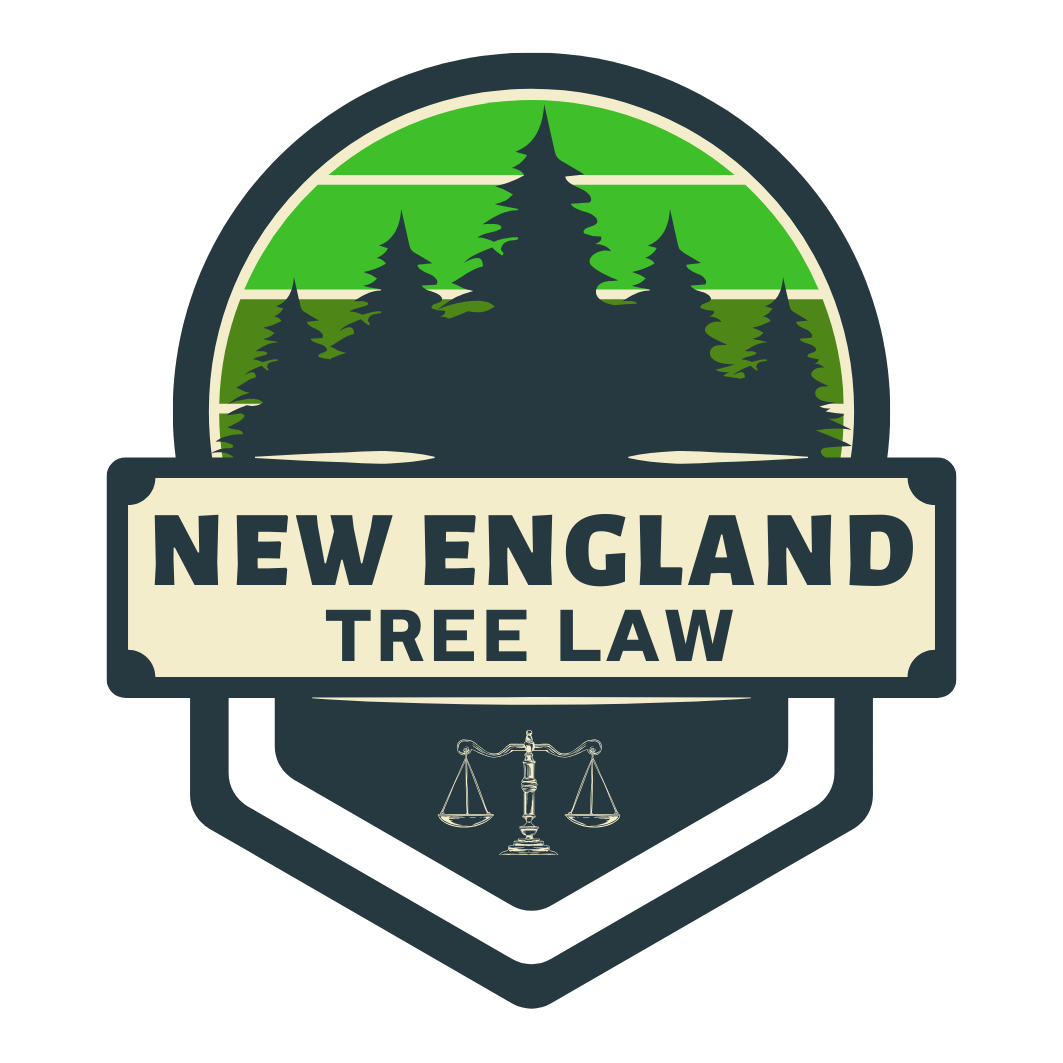Who owns a tree on the property line between two neighbors in New Hampshire?
Trees are bountiful in New Hampshire and much-treasured by property owners. They can also be the subject of disputes between neighbors. A neighbor might accidentally trespass over the property line and cut down their neighbor’s tree — an act known as timber trespass.
If you think a neighbor cut down your trees, one of the first things to establish is whether the trees were actually on your property. In some cases, the neighbor or tree service may admit their fault. But in many situations, there may be a question about where the property line exactly is.
It is important to note that the location of a fence is not determinative of the property line. Many fences are situated at least a few inches off the of the actual boundary.
It may be possible to ascertain the property line yourself if the property bounds are clearly visible and undisputed. If so, that is great. In many cases, however, a survey could be necessary.
Once the property line is established, you can definitively answer the question of owns the tree. But sometimes, the situation is a bit more complicated: what if the tree is actually on the property line?
Boundary line trees
Ancient case law in New Hampshire makes clear that “a tree standing directly upon the line between adjoining owners, so that the line passes through it, is the common property of both parties, whether marked or not, and that trespass will lie if one cuts and destroys it without the consent of the other.” Griffin v. Bixby, 12 N.H. 454, 457-58 (1841). In other words, both property owners are co-owners of the tree — “tenants in common.” Id. This is true even if most of the tree lies on one property or another. Wolfinger v. Moats, 7 Pa. D. & C 4th 220, 223-24 (Pa. C.C.P. 1990). As long as it is touching the boundary line, the tree is co-owned and cannot be removed without the other owner’s permission. Id.
When a tree is on the property line, it is owned by “unity of possession”: that is, their interests are inseverable. See Barney v. Leeds, 51 N.H. 253, 280 (1871). In other words, each property owner jointly owns the entire tree.
Thus, when a neighbor cuts down a tree on the property line without the co-owner’s permission, the aggrieved property owner is entitled to seek compensatory damages for the full value of the tree. The purpose of compensatory damages “is to put the injured party as nearly as possible in the same position he would have been had the injury not occurred.” Phillips v. Verax Corp., 138 N.H. 240, 248 (1994). Where a valued for aesthetics, privacy, ornamentation, nothing less than an identical replacement tree will “make whole” the injured property owner. Thus, the replacement value of the whole tree is the appropriate measure of damages. See Woodburn v. Chapman, 116 N.H. 503, 504-05 (1976).
Trees in New Hampshire can have significant value. Arborists employ the Trunk Formula Method to place a replacement cost on large trees in residential settings. Our free tree value appraisal calculator can provide an estimate of tree replacement cost.
If your trees — including shared trees on the property line itself — were cut down by a neighbor or tree service, you could be entitled to compensation. An experienced timber trespass attorney can assist you with your claim or lawsuit. Contact us today for a free consultation.

